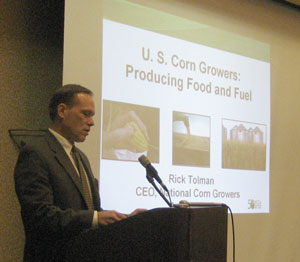International commodity trading company Louis Dreyfus is buying an addition four sugar ethanol mills in Brazil to become the second-biggest sugarcane processor in the country.
According to a Bloomberg.com report, Paris-based Louis Dreyfus, which already owns four sugar and ethanol mills in Brazil, expects the acquisition to boost sugarcane processing to 18.5 million metric tons by 2009, from 11.8 million tons this year, the company said in a statement. Financial terms of the acquisition weren’t disclosed.


 Colorado motorists will soon have 40 more pumps to fill up with 85 percent ethanol.
Colorado motorists will soon have 40 more pumps to fill up with 85 percent ethanol. Arizona-based
Arizona-based 
 Rising tortilla prices in Mexico are not the result of increased U.S. ethanol production or U.S. corn prices, according to the CEO of the
Rising tortilla prices in Mexico are not the result of increased U.S. ethanol production or U.S. corn prices, according to the CEO of the 
 Back in
Back in  Democratic presidential candidate Tom Vilsack, former governor of Iowa, unveiled his plan for energy security during a speech in San Francisco Tuesday.
Democratic presidential candidate Tom Vilsack, former governor of Iowa, unveiled his plan for energy security during a speech in San Francisco Tuesday.  The
The  The round “I Drive E85, the future of Clean Air” magent is big enough to make a statement, yet small enough to fit tastefully over the outside of a vehicle’s fuel door.
The round “I Drive E85, the future of Clean Air” magent is big enough to make a statement, yet small enough to fit tastefully over the outside of a vehicle’s fuel door.  There are also coffee mugs, hats, clings, key rings and more available to
There are also coffee mugs, hats, clings, key rings and more available to